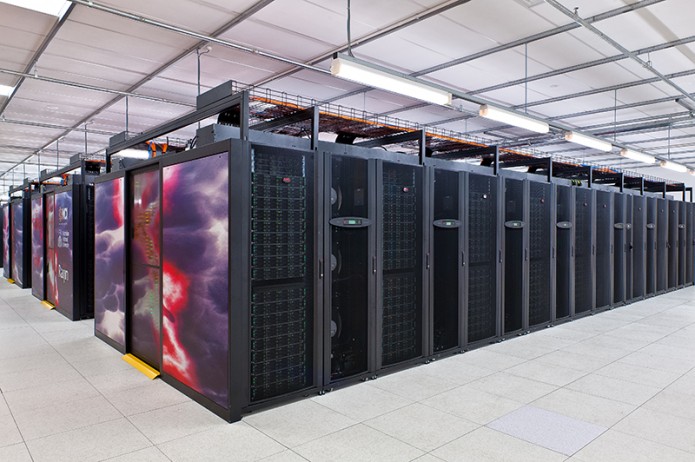The National Computational Infrastructure (NCI), Australia’s high-performance supercomputer, cloud and data repository, has received a $7M boost from the Australian Government, matched by the NCI Collaborating partners.
The NCI predicts that the $14M investment will provide a 30 per cent increase in NCI’s computational capability. In addition, it will allow the NCI to continue to provide a robust service for nationally significant research data across a range of disciplines, including the earth and environmental sciences, medical research, astronomy and materials science.
“Commenting on the importance of the allocation announced, Professor Lindsay Botten, NCI Director said: “This is a wonderful outcome for Australian research, and an expression of the value of, and confidence in, the advanced computational and data services provided by NCI.”
The funding will be used to support the ongoing delivery of NCI’s supercomputing services to more than 4,000 researchers in more than 80 per cent of Australian universities, together with government science agencies, medical research institutes, and industry.
Raijin, NCI’s current supercomputer, has a peak performance of 1.2 Petaflops, completing 1,200 trillion calculations per second and delivering more than 500 million compute hours per year,” said NCI Associate Director, Allan Williams.
The expansion provided by this co-investment will see an extra 150 million compute hours become available, alleviating severe supply shortages and enabling more research until Raijin can be replaced.
“Researcher demand is currently outstripping NCI’s current HPC system, which was installed in 2012. This expansion is a most welcome boost as demand for high-performance computing is increasing in every area of research and in every research organization,” said Mr Williams.
Researchers will not only see a 30 per cent boost in supercomputer throughput, but will have access to cutting-edge technology, and will benefit from a 10 per cent increase in overall storage capability,” concluded Williams.
NCI supports the full gamut of Australian science, engineering, and medical research. The Bureau of Meteorology and Commonwealth Scientific and Industrial Research Organization (CSIRO) are developing next-generation weather and climate models and an enhanced seasonal prediction capability for agriculture, while Geoscience Australia is unveiling Australia’s evolving environmental profile derived from decades of satellite imagery.
Professor Chris Goodnow, Deputy Director of NCI’s Collaborating Partner, the Garvan Institute of Medical Research, says the increase in NCI’s capacity could help to facilitate the next big step forward in cancer research.
Goodnow said: ‘There are over 70 bioinformaticians working on genomic data at Garvan, and we are generating mind-bogglingly large amounts of genomic information.”
Each genome requires 5,000 hours of compute time and one terabyte of storage, but using the NCI supercomputer, Garvan can process hundreds of genomes simultaneously.
NCI provides an academically accessible but secure computational environment, so it’s an ideal repository for the large-scale genomic datasets that Garvan is producing. This is not just about Garvan and NCI – this is doing something good for all Australia’ concluded Goodman.
This story appears here as part of a cross-publishing agreement with Scientific Computing World.




